-
Executive Summary
-
Scope of the Report
-
Market Definition
-
Scope of the
- Research Objectives
- Assumptions & Limitations
-
Study
-
Markets Structure
-
Market Research Methodology
-
Research
-
Methodology
-
Secondary Research
-
Primary Research
-
Forecast Model
-
Market Landscape
-
Supply Chain Analysis
- Manufacturers/Producers
- Distributors/Retailers/Wholesalers/E-Commerce
- End Users
- Bargaining
- Bargaining Power
- Threat of Substitutes
- Intensity of Rivalry
-
Raw Grade Suppliers
-
Porter’s Five Forces Analysis
-
Threat of New Entrants
-
Power of Buyers
-
of Suppliers
-
Market
-
Dynamics of the Global Polymeric Surfactants Market
-
Introduction
-
Drivers
-
Restraints
-
Opportunities
-
Challenges
-
Trends/Technology
-
Global Polymeric
-
Surfactants Market, by Type
-
Introduction
- Market Estimates & Forecast, 2020-2027
- Market Estimates & Forecast, by Region, 2020-2027
- Market Estimates
- Market Estimates & Forecast,
-
Natural
-
Synthetic
-
& Forecast, 2020-2027
-
by Region, 2020-2027
-
Global Polymeric Surfactants
-
Market, by Grade
-
Introduction
- Market Estimates & Forecast, 2020-2027
- Market Estimates & Forecast, by Region, 2020-2027
- Market Estimates & Forecast, 2020-2027
- Market Estimates & Forecast, by Region, 2020-2027
-
Block
-
Graft
-
Global Polymeric Surfactants Market, by Application
-
Introduction
-
Dispersants
- Market
- Market Estimates &
-
Estimates & Forecast, 2020-2027
-
Forecast, by Region, 2020-2027
-
Wetting Agents
- Market
-
Market Estimates & Forecast, 2020-2027
-
Estimates & Forecast, by Region, 2020-2027
-
Oilfield
- Market Estimates & Forecast, 2020-2027
- Market Estimates & Forecast, by Region, 2020-2027
- Market Estimates & Forecast,
- Market Estimates & Forecast, by Region, 2020-2027
-
Chemicals
-
Dyeing Auxiliaries
-
Emulsifiers
- Market Estimates &
- Market Estimates & Forecast, by
-
Forecast, 2020-2027
-
Region, 2020-2027
-
Viscosity Modifier
- Market
-
Market Estimates & Forecast, 2020-2027
-
Estimates & Forecast, by Region, 2020-2027
-
Foam Boosters
- Market Estimates & Forecast, 2020-2027
-
Market Estimates & Forecast, by Region, 2020-2027
-
Others
-
Market Estimates & Forecast, 2020-2027
-
Market Estimates & Forecast, by Region, 2020-2027
-
Global Polymeric Surfactants Market, by End-Use Industry
-
Introduction
-
Paints
- Market Estimates & Forecast, 2020-2027
- Market Estimates & Forecast, by Region, 2020-2027
- Market Estimates &
- Market Estimates & Forecast, by
-
& Coatings
-
Cosmetics & Personal Care
-
Forecast, 2020-2027
-
Region, 2020-2027
-
Oil & Gas
- Market
- Market Estimates &
-
Estimates & Forecast, 2020-2027
-
Forecast, by Region, 2020-2027
-
Agrochemicals
- Market
-
Market Estimates & Forecast, 2020-2027
-
Estimates & Forecast, by Region, 2020-2027
-
Pharmaceuticals
- Market Estimates & Forecast, 2020-2027
-
Market Estimates & Forecast, by Region, 2020-2027
-
Food
-
Rubber
-
Others
-
Market Estimates & Forecast, 2020-2027
-
Market Estimates & Forecast, by Region, 2020-2027
-
Market Estimates & Forecast, 2020-2027
-
Market Estimates & Forecast, by Region, 2020-2027
-
Market Estimates & Forecast, 2020-2027
-
Market Estimates & Forecast, by Region, 2020-2027
-
Global Polymeric Surfactants Market, by Region
-
Introduction
-
North America
-
Market Estimates & Forecast, 2020-2027
-
Market Estimates & Forecast, by Type, 2020-2027
-
Market Estimates & Forecast, by Grade, 2020-2027
-
Market Estimates & Forecast, by Application, 2020-2027
-
Market Estimates & Forecast, by End-Use Industry, 2020-2027
-
& Forecast, by Type, 2020-2027
-
US
-
Market Estimates & Forecast, 2020-2027
-
Market Estimates
-
Market Estimates & Forecast, by Grade,
-
Market Estimates & Forecast, by Application, 2020-2027
-
& Forecast, by End-Use Industry, 2020-2027
-
Canada
-
Market Estimates & Forecast, 2020-2027
-
Forecast, by Type, 2020-2027
-
Estimates & Forecast, by Application, 2020-2027
-
Estimates & Forecast, by End-Use Industry, 2020-2027
-
Estimates & Forecast, by Type, 2020-2027
-
Market Estimates
-
Market Estimates &
-
Market Estimates & Forecast, by Grade, 2020-2027
-
Market
-
Market
-
Europe
- Market Estimates & Forecast, 2020-2027
- Market Estimates & Forecast, by Type 2020-2027
- Market Estimates & Forecast, by Grade, 2020-2027
- Market Estimates & Forecast, by Application, 2020-2027
- Market Estimates & Forecast, by End-Use Industry,
- Germany
-
Market Estimates & Forecast, by Application, 2020-2027
-
& Forecast, by End-Use Industry, 2020-2027
-
Estimates & Forecast, 2020-2027
-
Estimates & Forecast, by Grade, 2020-2027
-
Application, 2020-2027
-
Forecast, by End-Use Industry, 2020-2027
-
Estimates & Forecast, 2020-2027
-
Estimates & Forecast, by Grade, 2020-2027
-
Application, 2020-2027
-
Forecast, by End-Use Industry, 2020-2027
-
Estimates & Forecast, 2020-2027
-
Market Estimates
-
France
-
Market
-
Market Estimates & Forecast, by Type, 2020-2027
-
Market
-
Market Estimates & Forecast, by
-
Market Estimates &
-
Italy
-
Market
-
Market Estimates & Forecast, by Type, 2020-2027
-
Market
-
Market Estimates & Forecast, by
-
Market Estimates &
-
Spain
-
Market
-
Market Estimates & Forecast, by Type,
-
Market Estimates & Forecast, by Grade, 2020-2027
-
& Forecast, by Application, 2020-2027
-
Estimates & Forecast, by End-Use Industry, 2020-2027
-
UK
-
Market Estimates & Forecast, 2020-2027
-
Type, 2020-2027
-
Market Estimates
-
Market
-
Market Estimates & Forecast, by
-
Market Estimates & Forecast, by Grade, 2020-2027
-
Forecast, by Application, 2020-2027
-
& Forecast, by End-Use Industry, 2020-2027
-
Estimates & Forecast, 2020-2027
-
Estimates & Forecast, by Grade, 2020-2027
-
Application, 2020-2027
-
by End-Use Industry, 2020-2027
-
& Forecast, 2020-2027
-
Estimates & Forecast, by Grade, 2020-2027
-
Application, 2020-2027
-
by End-Use Industry, 2020-2027
-
& Forecast, 2020-2027
-
Estimates & Forecast, by Grade, 2020-2027
-
Application, 2020-2027
-
by End-Use Industry, 2020-2027
-
Market Estimates & Forecast, 2020-2027
-
Market Estimates &
-
Market Estimates
-
Russia
-
Market
-
Market Estimates & Forecast, by Type, 2020-2027
-
Market
-
Market Estimates & Forecast, by
-
Market Estimates & Forecast,
-
Poland
-
Market Estimates
-
Market Estimates & Forecast, by Type, 2020-2027
-
Market
-
Market Estimates & Forecast, by
-
Market Estimates & Forecast,
-
Rest of Europe
-
Market Estimates
-
Market Estimates & Forecast, by Type, 2020-2027
-
Market
-
Market Estimates & Forecast, by
-
Market Estimates & Forecast,
-
Asia-Pacific
-
Market Estimates & Forecast, by Type, 2020-2027
-
Market Estimates & Forecast, by Grade, 2020-2027
-
Market Estimates & Forecast, by Application, 2020-2027
-
Market Estimates & Forecast, by End-Use Industry,
-
China
-
Market Estimates & Forecast,
-
Market Estimates & Forecast, by Type, 2020-2027
-
Forecast by Grade, 2020-2027
-
Estimates & Forecast, by Type, 2020-2027
-
Market Estimates &
-
Market Estimates & Forecast, by Application, 2020-2027
-
Market Estimates & Forecast, by End-Use Industry, 2020-2027
-
India
-
Market Estimates & Forecast, 2020-2027
-
Market
-
Market Estimates & Forecast, by Grade,
-
Market Estimates & Forecast, by Application, 2020-2027
-
Market Estimates & Forecast, by End-Use Industry, 2020-2027
-
Japan
-
& Forecast, by Type, 2020-2027
-
Market Estimates & Forecast, 2020-2027
-
Market Estimates
-
Market Estimates & Forecast, by Grade,
-
Market Estimates & Forecast, by Application, 2020-2027
-
Market Estimates & Forecast, by End-Use Industry, 2020-2027
-
Australia & New Zealand
-
Estimates & Forecast, by Type, 2020-2027
-
Grade, 2020-2027
-
& Forecast, 2020-2027
-
Estimates & Forecast, by Grade, 2020-2027
-
Application, 2020-2027
-
by End-Use Industry, 2020-2027
-
Market Estimates & Forecast, 2020-2027
-
Market
-
Market Estimates & Forecast, by
-
Market Estimates & Forecast, by Application, 2020-2027
-
Market Estimates & Forecast, by End-Use Industry, 2020-2027
-
Rest of Asia-Pacific
-
Market Estimates
-
Market Estimates & Forecast, by Type, 2020-2027
-
Market
-
Market Estimates & Forecast, by
-
Market Estimates & Forecast,
-
Middle East & Africa
- Market Estimates & Forecast, 2020-2027
-
Market Estimates & Forecast, by Type, 2020-2027
-
Market Estimates & Forecast, by Grade, 2020-2027
-
Market Estimates & Forecast, by Application, 2020-2027
-
Market Estimates & Forecast, by End-Use Industry, 2020-2027
-
Forecast, by Type, 2020-2027
-
& Forecast, by Application, 2020-2027
-
& Forecast, by End-Use Industry, 2020-2027
-
Israel
-
Market Estimates & Forecast, 2020-2027
-
Type, 2020-2027
-
GCC
-
Market Estimates & Forecast, 2020-2027
-
Market Estimates &
-
Market Estimates & Forecast, by Grade, 2020-2027
-
Market Estimates
-
Market Estimates
-
Market Estimates & Forecast, by
-
Market Estimates & Forecast, by Grade, 2020-2027
-
by Application, 2020-2027
-
by End-Use Industry, 2020-2027
-
& Forecast, 2020-2027
-
& Forecast, by Grade, 2020-2027
-
& Forecast, by Type, 2020-2027
-
& Forecast, by Application, 2020-2027
-
& Forecast, by End-Use Industry, 2020-2027
-
East & Africa
-
Forecast, by Type, 2020-2027
-
Estimates & Forecast, by Application, 2020-2027
-
Market Estimates & Forecast,
-
Market Estimates & Forecast,
-
North Africa
-
Market Estimates
-
Market Estimates & Forecast, by Type, 2020-2027
-
Market Estimates
-
Market Estimates & Forecast, by Application, 2020-2027
-
Market Estimates & Forecast, by End-Use Industry, 2020-2027
-
Turkey
-
Market Estimates & Forecast, 2020-2027
-
Market Estimates
-
Market Estimates & Forecast, by Grade, 2020-2027
-
Market Estimates
-
Market Estimates
-
Rest of Middle
-
Market Estimates & Forecast, 2020-2027
-
Market Estimates &
-
Market Estimates & Forecast, by Grade, 2020-2027
-
Market
-
Market Estimates & Forecast, by End-Use Industry, 2020-2027
-
Latin America
-
Industry, 2020-2027
-
& Forecast, 2020-2027
-
Estimates & Forecast, by Grade, 2020-2027
-
Industry, 2020-2027
-
Forecast, 2020-2027
-
Market Estimates & Forecast,
-
Market Estimates & Forecast, by Type,
-
Market Estimates & Forecast, by Grade,
-
Market Estimates & Forecast, by Application,
-
Market Estimates & Forecast, by End-Use
-
Brazil
-
Market Estimates
-
Market Estimates & Forecast, by Type, 2020-2027
-
Market
-
Market Estimates & Forecast, by Application,
-
Market Estimates & Forecast, by End-Use
-
Mexico
-
Market Estimates &
-
Market Estimates & Forecast, by Type, 2020-2027
-
by Grade, 2020-2027
-
Market Estimates & Forecast,
-
Market Estimates & Forecast, by Application, 2020-2027
-
Market Estimates & Forecast, by End-Use Industry, 2020-2027
-
Argentina
-
Forecast, by Type, 2020-2027
-
& Forecast, by Application, 2020-2027
-
& Forecast, by End-Use Industry, 2020-2027
-
of Latin America
-
Market Estimates & Forecast, 2020-2027
-
Market Estimates & Forecast, 2020-2027
-
Market Estimates &
-
Market Estimates & Forecast, by Grade, 2020-2027
-
Market Estimates
-
Market Estimates
-
Rest
-
Market Estimates & Forecast, by Type,
-
Market Estimates & Forecast, by Grade, 2020-2027
-
Market Estimates & Forecast, by Application,
-
Market Estimates & Forecast, by End-Use Industry,
-
Company Landscape
-
Introduction
-
Market Strategy
-
Key Development Analysis
-
(Expansions/Mergers
-
& Acquisitions/Joint Ventures/New Product Developments/Agreements/Investments)
-
Company Profiles
-
Kao
- Financial Updates
- Product/Business Segment Overview
- Strategy
- SWOT Analysis
- Financial Updates
- Product/Business Segment Overview
- Strategy
- SWOT Analysis
-
Corporation
-
Company Overview
-
Key Developments
-
BASF SE
-
Company Overview
-
Key Developments
-
Akzo Nobel NV
- Company Overview
- Strategy
- Key Developments
-
Financial Updates
-
Product/Business Segment Overview
-
SWOT Analysis
-
Croda International Plc
- Company
- Financial Updates
- Product/Business Segment Overview
- Key Developments
- SWOT Analysis
-
Overview
-
Strategy
-
Clariant
- Company Overview
- Product/Business
- Strategy
- SWOT Analysis
-
Financial Updates
-
Segment Overview
-
Key Developments
-
Evonik Industries AG
- Company
- Financial Updates
- Product/Business Segment Overview
- Key Developments
- SWOT Analysis
-
Overview
-
Strategy
-
Huntsman
- Financial Updates
- Product/Business Segment Overview
- Strategy
- SWOT Analysis
- Financial Updates
- Product/Business Segment Overview
- Strategy
- SWOT Analysis
- Financial Updates
- Product/Business Segment Overview
- Strategy
- SWOT Analysis
- Company Overview
- Financial
- Product/Business Segment
- Strategy
- SWOT Analysis
-
International LLC
-
Company Overview
-
Key Developments
-
DAI-ICHI
-
Company Overview
-
Key Developments
-
Stepan Company
-
Company Overview
-
Key Developments
-
Air Products and Chemicals, Inc.
-
Updates
-
Overview
-
Key Developments
-
Conclusion
-
LIST OF TABLES
-
Global Polymeric Surfactants Market,
-
by Region, 2020-2027
-
North America:
-
Polymeric Surfactants Market, by Country, 2020-2027
-
Table 3
-
Europe: Polymeric Surfactants Market, by Country, 2020-2027
-
Table
-
Asia-Pacific: Polymeric Surfactants Market, by Country, 2020-2027
-
Middle East & Africa: Polymeric Surfactants
-
Market, by Country, 2020-2027
-
Latin America:
-
Polymeric Surfactants Market, by Country, 2020-2027
-
Table 7
-
Global Polymeric Surfactants by Type Market, by Regions, 2020-2027
-
North America: Polymeric Surfactants by Type Market,
-
by Country, 2020-2027
-
Europe: Polymeric Surfactants
-
by Type Market, by Country, 2020-2027
-
Table10 Asia-Pacific:
-
Polymeric Surfactants by Type Market, by Country, 2020-2027
-
Table10
-
Middle East & Africa: Polymeric Surfactants by Type Market, by Country,
-
Table12 Latin America: Polymeric Surfactants
-
by Type Market, by Country, 2020-2027
-
Table12 Global
-
Polymeric Surfactants Grade Market, by Regions, 2020-2027
-
Table14
-
North America: Polymeric Surfactants Grade Market, by Country, 2020-2027
-
Table15 Europe: Polymeric Surfactants Grade Market, by Country,
-
Table16 Asia-Pacific: Polymeric Surfactants
-
Grade Market, by Country, 2020-2027
-
Table17 Middle
-
East & Africa: Polymeric Surfactants Grade Market, by Country, 2020-2027
-
Table18 Latin America: Polymeric Surfactants Grade Market, by
-
Country, 2020-2027
-
Table19 Global Polymeric Surfactants
-
Application Market, by Regions, 2020-2027
-
Table20 North America:
-
Polymeric Surfactants Application Market, by Country, 2020-2027
-
Table21
-
Europe: Polymeric Surfactants Application Market, by Country, 2020-2027
-
Table22 Asia-Pacific: Polymeric Surfactants Application Market,
-
by Country, 2020-2027
-
Table23 Middle East & Africa:
-
Polymeric Surfactants Application Market, by Country, 2020-2027
-
Table24
-
Latin America: Polymeric Surfactants Application Market, by Country, 2020-2027
-
Global Polymeric Surfactants End-Use Industry Market,
-
by Regions, 2020-2027
-
North America: Polymeric Surfactants
-
End-Use Industry Market, by Country, 2020-2027
-
Table 27
-
Europe: Polymeric Surfactants End-Use Industry Market, by Country, 2020-2027
-
Asia-Pacific: Polymeric Surfactants End-Use
-
Industry Market, by Country, 2020-2027
-
Middle
-
East & Africa: Polymeric Surfactants End-Use Industry Market, by Country, 2020-2027
-
Latin America: Polymeric Surfactants End-Use
-
Industry Market, by Country, 2020-2027
-
Global
-
Type Market, by Region, 2020-2027
-
Global
-
Grade Market, by Region, 2020-2027
-
Global
-
Application Market, by Region, 2020-2027
-
Global
-
End-Use Industry Market, by Region, 2020-2027
-
North
-
America: Polymeric Surfactants Market, by Country, 2020-2027
-
Table 36
-
North America: Polymeric Surfactants Market, by Type, 2020-2027
-
Table
-
North America: Polymeric Surfactants Market, by Grade, 2020-2027
-
North America: Polymeric Surfactants Market, by Application,
-
North America: Polymeric Surfactants Market,
-
by End-Use Industry, 2020-2027
-
Europe: Polymeric
-
Surfactants Market, by Country, 2020-2027
-
Europe:
-
Polymeric Surfactants Market, by Type, 2020-2027
-
Europe:
-
Polymeric Surfactants Market, by Grade, 2020-2027
-
Europe:
-
Polymeric Surfactants Market, by Application, 2020-2027
-
Table 44
-
Europe: Polymeric Surfactants Market, by End-Use Industry, 2020-2027
-
Table
-
Asia-Pacific: Polymeric Surfactants Market, by Country, 2020-2027
-
Asia-Pacific: Polymeric Surfactants Market, by Type,
-
Asia-Pacific: Polymeric Surfactants Market,
-
by Grade, 2020-2027
-
Asia-Pacific: Polymeric
-
Surfactants Market, by Application, 2020-2027
-
Asia-Pacific:
-
Polymeric Surfactants Market, by End-Use Industry, 2020-2027
-
Table 50
-
Middle East & Africa: Polymeric Surfactants Market, by Country, 2020-2027
-
Middle East & Africa: Polymeric Surfactants Market,
-
by Type, 2020-2027
-
Middle East & Africa: Polymeric
-
Surfactants Market, by Grade, 2020-2027
-
Middle
-
East & Africa: Polymeric Surfactants Market, by Application, 2020-2027
-
Table
-
Middle East & Africa: Polymeric Surfactants Market, by
-
End-Use Industry, 2020-2027
-
Latin America: Polymeric
-
Surfactants Market, by Country, 2020-2027
-
Latin
-
America: Polymeric Surfactants Market, by Type, 2020-2027
-
Table 57
-
Latin America: Polymeric Surfactants Market, by Grade, 2020-2027
-
Table
-
Latin America: Polymeric Surfactants Market, by Application,
-
Latin America: Polymeric Surfactants Market,
-
by End-Use Industry, 2020-2027
-
LIST OF FIGURES
-
Figure 1
-
Global Polymeric Surfactants Market Segmentation
-
Figure 2
-
Forecast Research Methodology
-
Porter’s
-
Five Forces Analysis of the Global Polymeric Surfactants Market
-
Figure 4
-
Value Chain of the Global Polymeric Surfactants Market
-
Figure
-
Share of the Global Polymeric Surfactants Market in 2020,
-
by Country (%)
-
Global Polymeric Surfactants Market,
-
Global Polymeric Surfactants Market
-
Size, by Type, 2020
-
Share of the Global Polymeric
-
Surfactants Market, by Type, 2020-2027
-
Global
-
Polymeric Surfactants Market Size, by Grade, 2020
-
Share
-
of the Global Polymeric Surfactants Market, by Grade, 2020-2027
-
Figure 10
-
Global Polymeric Surfactants Market Size, by Application, 2020
-
Figure
-
Share of the Global Polymeric Surfactants Market, by Application,
-
Figure12 Global Polymeric Surfactants Market Size, by
-
End-Use Industry, 2020
-
Share of the Global Polymeric
-
Surfactants Market, by End-Use Industry, 2020-2027
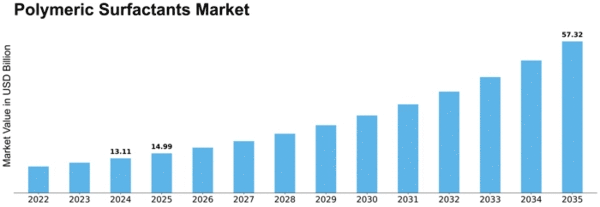

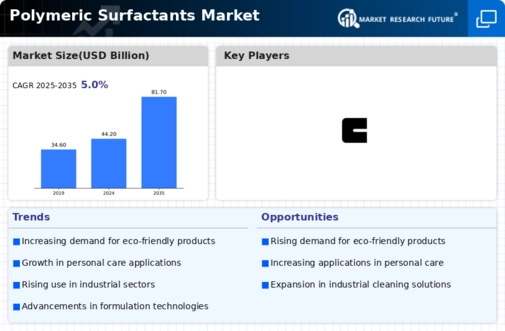

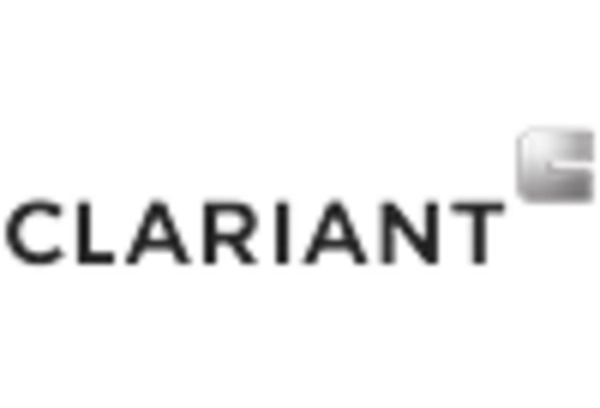
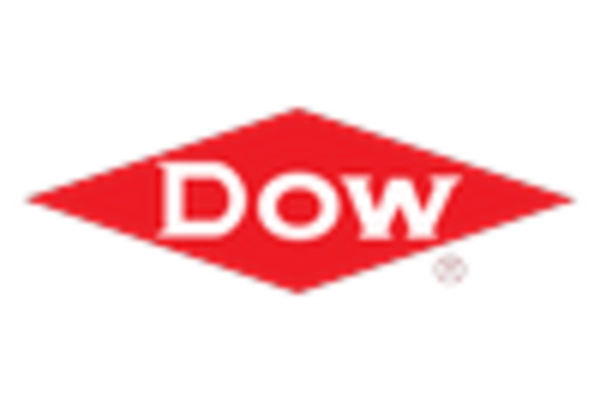
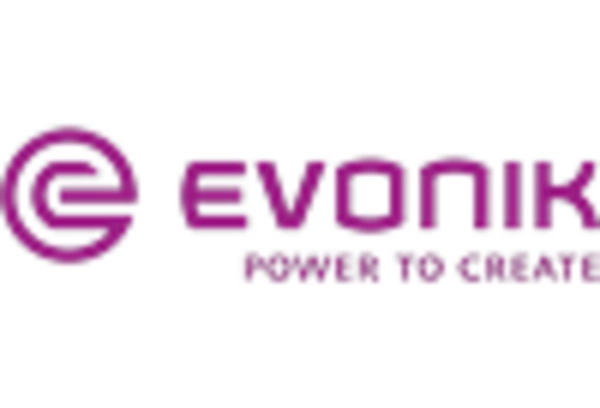
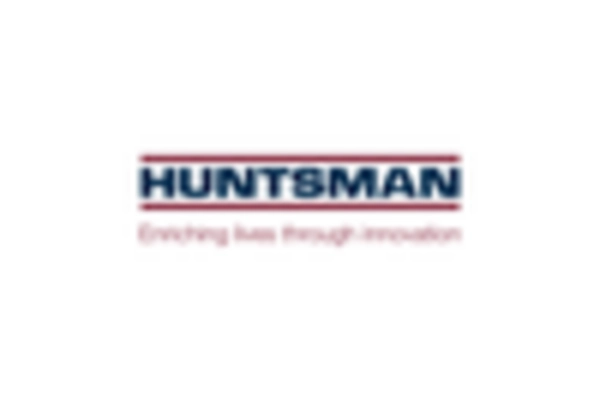
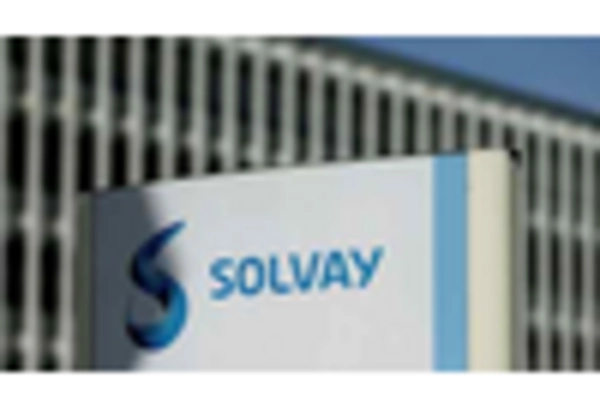









Leave a Comment